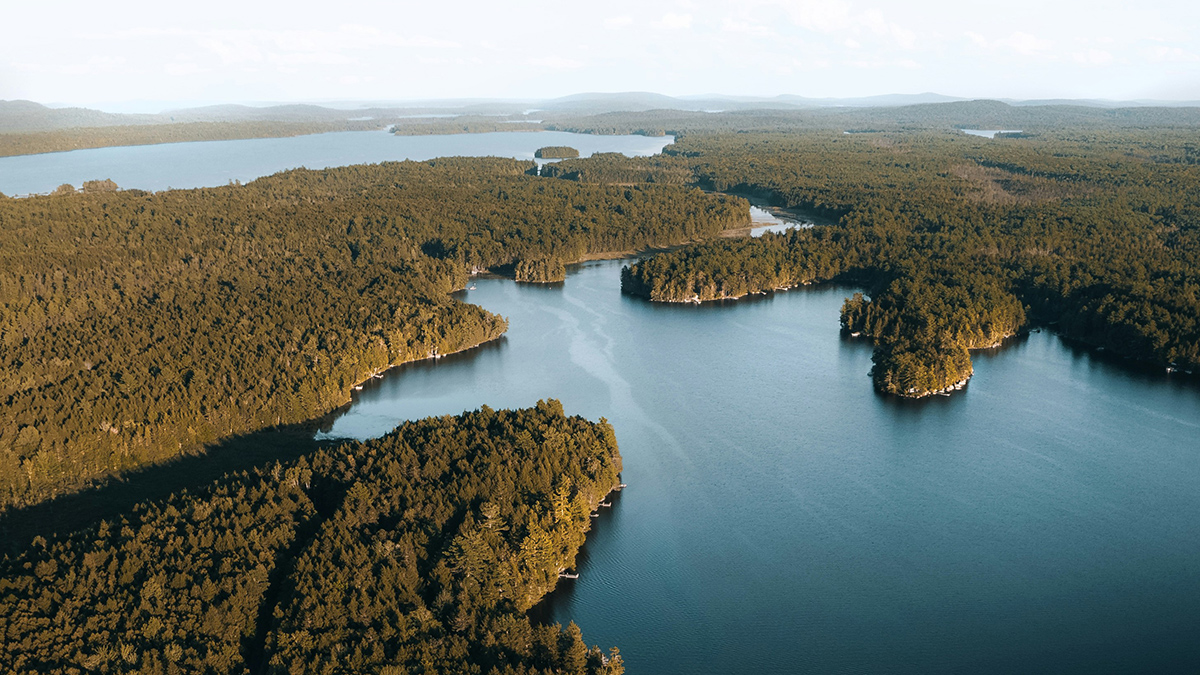New England is one of the most heavily forested areas in America: Roughly 15 million metric tons of carbon is stored there every year. Many carbon offset programs reforest in the region.
“We’re not really adequately accounting for risks when we’re relying on forest carbon as a nature-based climate solution.”
These projects account for disasters that can kill trees and release their stored carbon. However, a new study published in Global Change Biology suggests that they may be underestimating the destructive power of hurricanes. A single hurricane in New England could release at least 121 million metric tons of carbon from downed trees, the study showed, the equivalent of the energy use of almost 16 million homes in 1 year.
“I wanted to use this case study of New England and its risk from hurricanes to outline the broader issue,” said Shersingh Joseph Tumber-Dávila, a forest ecologist at Dartmouth College and first author of the study. “We’re not really adequately accounting for risks when we’re relying on forest carbon as a nature-based climate solution.”
Carbon Credits
When a company buys a carbon credit, it buys a slight surplus of offset, allowing offset programs to plant slightly more trees to take in more carbon than is being emitted. That way, if trees are lost to drought, fire, disease, or other disasters, the program stays carbon neutral. However, these “buffer pools” are relatively small. The largest carbon offset program in the United States, California’s Cap-and-Trade Program, sets aside only 8%–12% of its trees as a buffer, and only 3% of trees for storm damage, specifically.
Earlier studies have questioned these buffer pools, claiming they don’t adequately assess the threats that forests face in a changing climate. This is the first study to analyze the potential effect hurricanes could have on carbon offset forests.
To accurately account for the forests of New England, Tumber-Dávila and his colleagues worked with the U.S. Forest Service to create a map of different tree heights and types across New England. They also created a simulation of likely hurricane paths using the wind speed and direction of the 10 tropical storms in the 20th century that reached New England while still classified as hurricanes. By combining these models, the group could calculate the number of trees likely to be downed in a typical hurricane, and the carbon released.

“Each storm that hits the region has a capacity to wipe out anywhere from 5% to 10% of aboveground forest carbon,” Tumber-Dávila said. This high percentage effectively resets the clock, taking out 10 years of slowly sequestered carbon.
On top of this massive carbon loss potential, the researchers also factored in the potential for hurricanes to get stronger over time. Climate simulations suggest that though hurricanes may not become more frequent, their wind speeds will likely increase, and, in New England specifically, they may move farther inland without losing steam. Taking these changes into account, the group estimated that in 30–60 years, up to 250 million metric tons of carbon could be released by one storm in New England that’s severe enough.
All that carbon would not go into the atmosphere right away, however. Decaying wood from felled trees releases carbon slower than in other types of disturbances, such as fire. Around 25% of fallen trees in New England are harvested to be used in wood products, which can delay their carbon release. Researchers estimated that the slow release of carbon from a single hurricane could take 100 years.
Make It Meaningful
As of 2020, 7% of California’s Cap-and-Trade Program carbon was stored in New England forests, and 3% of that carbon was set aside for storm damage. A single storm could take out that buffer pool.
“I think setting aside more of an offset project’s carbon to insure against risks is definitely worth doing.”
“We need studies like this, and we need studies that are broader, national, global in scale to actually quantify the risks,” said William Anderegg, an Earth scientist at the University of Utah who was not involved with the study. When asked whether there are any carbon offset programs with a large enough buffer pool, Anderegg said, “Honestly, the short answer is no.”
Carbon offset programs are still important, Tumber-Dávila noted, but they lose their effectiveness if we underestimate the threats they face. “I think setting aside more of an offset project’s carbon to insure against risks is definitely worth doing.”
—Sierra Bouchér, Science Writer
20 May 2024: This article has been updated to correct Tumber-Dávila’s specialty.

